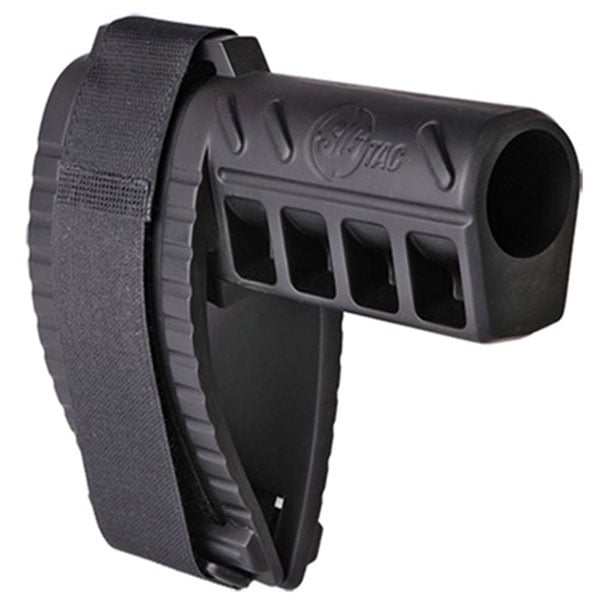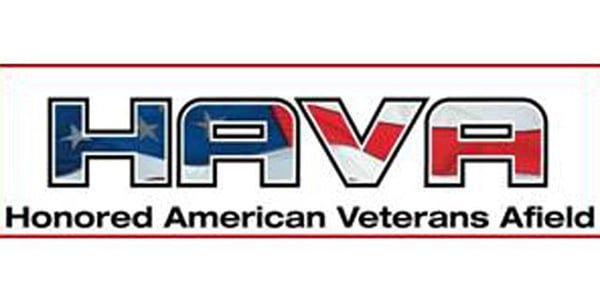
Last Updated on
By David Link
There has been much chatter about the use of a stabilizing brace with an AR pistol in the past year or so, and the ATF has recently released a clarification of the rules. But for those of you who aren’t quite sure what this whole uproar means if you already own a AR pistol brace, we’re going to break it down so it’s cut and dry (at least as much as it can be). The thing is there’s nothing to be upset about if you take the initial purpose of AR braces into account anyway. Let’s break down the ins and outs of proper AR pistol brace usage.
NFA Weapons
Real quick for those who aren’t already familiar with it, the National Firearms Act plays a big role in this whole AR pistol brace situation. The NFA was initially passed in 1934 in response to the swelling gang crimes that surrounded Prohibition, and it required that all firearms classified as NFA firearms be registered with the US government. From the initial passing of the act up until today, anyone seeking to own a NFA firearm must file paperwork for approval and pay a $200 processing fee. In 1968, NFA weapons were redefined, and for the purposes of this article, the definition of short barreled rifles is important:
“A firearm that meets the definition of a SBR consists of a rifle that has a barrel less than 16 inches in length. […] The serialized receiver is recorded for registration in the National Firearms Registration and Transfer Record (NFRTR).”
Short barreled rifles are operated with two hands, and differ from an AR pistol which is operated with one hand. We’ll come back to this difference as we examine the intended uses of an AR pistol brace.
How An AR Pistol Brace Works
AR pistol braces are designed to be strapped to the shooter’s forearm to provide additional support while firing. A user slides their hand through the adjustable cuff on the bottom half of the brace and tightens the brace around their arm with two adjustable nylon straps. Although they outwardly resemble an AR stock, they are not designed to function as an AR stock would. After all, the open cuff doesn’t provide anywhere equal to the support of a traditional AR stock, and no padding is attached to the end of the brace.
Sig-Tac, a division of famed firearms manufacturer Sig Sauer, is the most prominent designer of the AR pistol brace concept. Their SBX and SB15 pistol braces have been at the forefront of the “shoulder or not to shoulder” argument, but it is worth noting the major reason why the company initially released this product in the first place. Sig AR pistol braces are ideal for paralyzed shooters who cannot operate assault rifles with both hands for whatever reason, and the SBX and SB15 are perfect for this purpose. Sig Sauer’s commitment to shooters of this type led them to donate $3 to The Honored American Veterans Afield (HAVA) organization for every AR pistol brace sold. Of course all shooters are allowed to use the brace with one hand, but as we examine this debate, let us not forget why it is important for this product to be available for the general public.
The First ATF Explanation
As with any controversial firearm product, there are bound to be questions and clarifications surrounding their use. Early in 2014, a police officer in the Greenwood, CO Police Department asked for clarification surrounding the use of an AR pistol brace. A couple months later the Firearms Technology Branch (FTB) of the ATF responded to the Sergeant and word quickly spread to the firearms community:
“For the following reasons, we have determined that firing a pistol from the shoulder would not cause the pistol to be reclassified as an SBR: FTB classifies weapons based on their design characteristics. While usage/functionality of the weapon does influence the intended design, it is not the sole criterion for determining the classification of a weapon. Generally speaking, we do not classify weapons based upon how an individual uses a weapon. […] However, FTB cannot recommend using a weapon (or weapon accessory) in a manner not intended by the manufacturer.”
The question seemed to be an open and shut case. Simply attaching a brace to an AR pistol did not make it a NFA weapon, and this made perfect sense given the intended use of the brace by the manufacturer. Let us not forget that the Sig-Tac brace did not provide support, in particular non-slip support, if it was ever shouldered, and shouldering it could lead to dangerous consequences.

The last sentence in the previous quote makes that fact abundantly clear, but perhaps the ATF made a mistake when they used the string of words: “fining a pistol from the shoulder.” Even so their initial explanation was spot on in some regards. How can you classify something based upon usage when it can vary so wildly? Instead physical characteristics provide a stable, unchanging set of criteria to base classifications upon. Most importantly, if you really had your heart set on owning a SBR, there was (and still is) ample opportunity to own one for most people. But then Sig-Tac braces began to fly off the shelves.
The ATF’s Recent Clarification
Over the following months, the ATF continued to receive repeated inquiries about the use of AR pistol braces after the issuing of their response to the Greenwood, CO police officer. Only a few days ago, the ATF stepped up and issued a revised statement (once again here is the link) that some could say tiptoed back and changed their initial ruling on use of an AR pistol brace. The main portion to focus on from this new letter is:
“The pistol stabilizing brace was neither “designed” nor approved to be used as a shoulder stock, and therefore use as a shoulder stock constitutes a “redesign” of the device because a possessor has changed the very function of the item. […] Any person who intends to use a handgun stabilizing brace as a shoulder stock on a pistol (having a rifled barrel under 16 inches in length or a smooth bore firearm with a barrel under 18 inches in length) must first file an ATF Form 1 and pay the applicable tax because the resulting firearm will be subject to all provisions of the NFA.”
So there you have it. If you intend to use a pistol brace as a shoulder stock, then you need to register it as an NFA firearm and pay the appropriate tax. There’s no arguing that the ATF changed their tune on the subject as it became more popular with firearm enthusiasts, but anyone frustrated with this about face is probably missing the point. Any AR pistol brace is not designed or rated for use as a shoulder stock, and attempting to use it as such is a bit foolhardy to say the least. When it comes to tools like firearms that require the utmost respect and diligence when operated, why would you ever want to take chances just to save a few bucks? If you still want a SBR and you meet the ATF’s qualifications, then you can still own one, and most importantly you can own one with the proper equipment attached.
The advent of this letter does not make AR pistol braces illegal either, and we’re adamant that they should not be illegal, especially for those that utilize them because of a disability. But anyone who has been shouldering a AR pistol brace should be warned that they are in breach of the NFA and could be subject to the fines and jail time associated with violating the act. Since this ATF clarification is so new, we are not aware of any documented violations thus far, but it is a policy revision that every AR pistol owner should be aware of before heading out to the range.






Leave a Reply